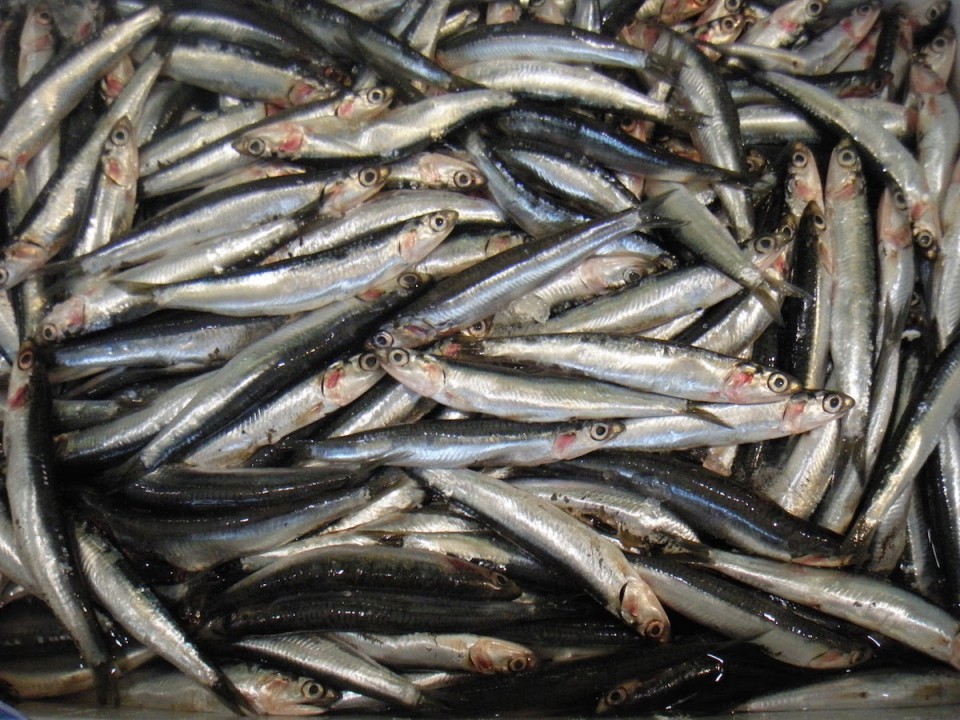Engraulis encrasicolus
Piccolo pesce pelagico, gregario e migratore: vive in vastissimi banchi, anche frammisti ad altre specie come sardine e papaline, in acque profonde durante tutto l’anno, salvo che nel periodo riproduttivo quando si avvicina alla costa. È presente nell’Atlantico orientale lungo le coste europee ma anche più a sud fino alle coste sudafricane, in tutto il Mediterraneo, compreso il Mar Nero e alcuni individui sporadici, sono stati segnalati persino nel Canale e nel Golfo di Suez. Il corpo dell’acciuga . affusolato, moderatamente compresso, con il muso a punta e l’occhio abbastanza grande. La bocca è molto grande e la mandibola più corta della mascella. L’acciuga si nutre di piccoli crostacei, di larve di molluschi e di plancton, anche plancton vegetale. Il dorso è blu-verdastro ed il ventre è bianco argenteo, da vivo, mentre da morto la parte dorsale diviene blu indaco. Si riproduce da aprile a settembre con un massimo tra luglio ed agosto. La fecondazione è esterna e la deposizione delle uova (ogni femmina ne produce fino a 40.000) avviene prevalentemente sotto costa durante le ore notturne da aprile fino a settembre. Da adulto raggiunge al massimo 20 cm di lunghezza , ma la taglia più comune è attorno ai 12 cm. L’attrezzo da pesca principale con cui viene catturato è la lampara-circuizione La taglia minima è di 9 cm.

